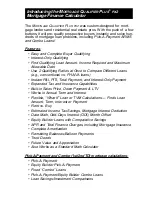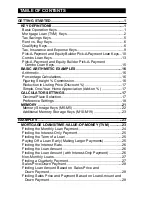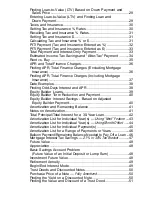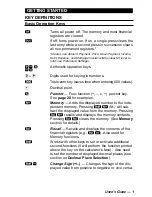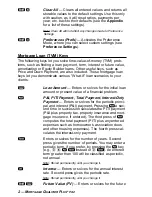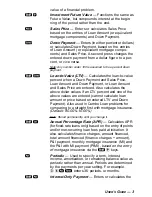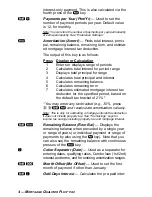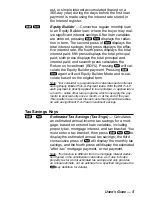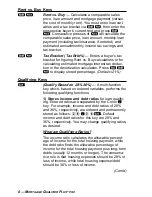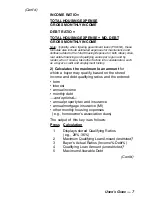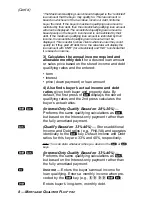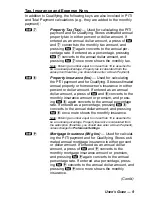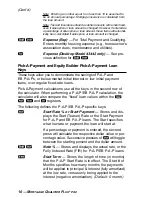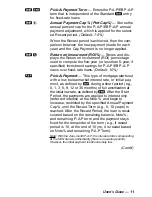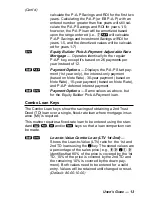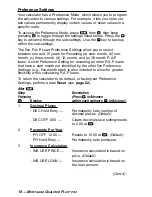
U
SER
’
S
G
UIDE
— 3
value of a financial problem.
s +
Investment Future Value — Functions the same as
Future Value, but compounds interest at the begin-
ning of the period rather than the end.
P
Sales Price — Enters or calculates Sales Price
based on the entries of Loan Amount (or equivalent
mortgage components) and Down Payment.
d
Down Payment — Enters (in either percent or dollars)
or calculates Down Payment, based on the entries
of Loan Amount (or equivalent mortgage compo-
nents) and Sales Price. A second press changes the
entered down payment from a dollar figure to a per-
cent, or vice versa.
Note: Any number under 100 is assumed to be a percent down
payment.
s d
Loan-to-Value (LTV) — Calculates the loan-to-value
percent when a Down Payment and Sales Price,
Loan Amount and Down Payment, or Loan Amount
and Sales Price are entered. Also calculates the
above dollar values if an LTV percent and one of the
above values are entered (cannot calculate loan
amount or price based on entered LTV and Down
Payment). Also used in Combo Loan problems for
comparing to a straight first with mortgage insurance.
(Default: 80.00%-10.00%)
Note: Stored permanently, until you change it.
s ˆ
Annual Percentage Rate (APR) — Calculates APR
(for fixed-rate loans only) based on the entry of points
and/or non-recurring loan fees paid at initiation. It
also calculates finance charges, amount financed,
total amount financed (finance c amount),
P&I payment, monthly mortgage insurance (MI) and
the P&I with MI payment (PIMI),
based on the entry
of mortgage insurance via the
s 9
keys.
π
Periodic — Used to specify a term, interest,
income, amortization, or remaining balance value as
periodic rather than annual. Periods are determined
by the payments per year setting. For example,
3 6 π T
enters 36 periods, or months.
s π
Interest-Only Payment — Enters or calculates the


